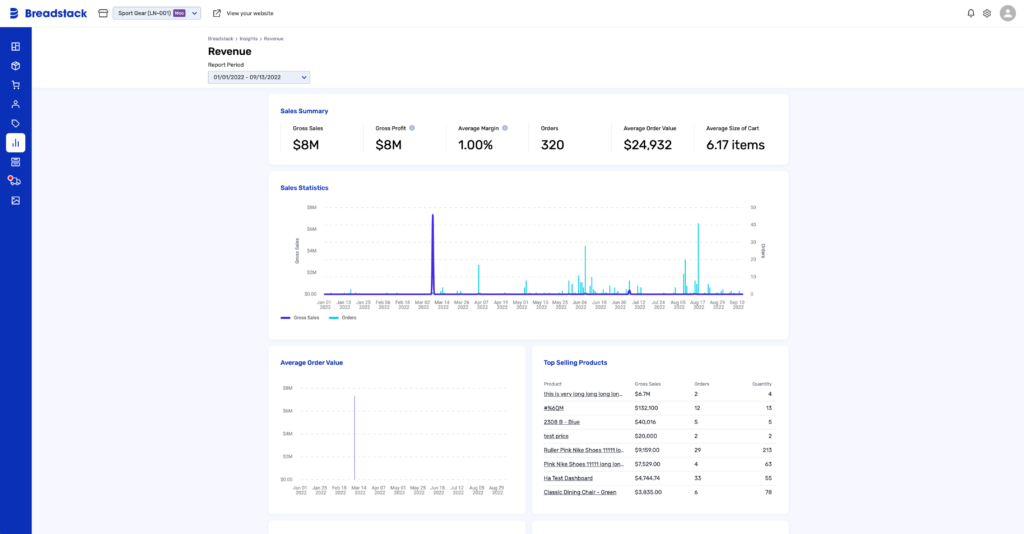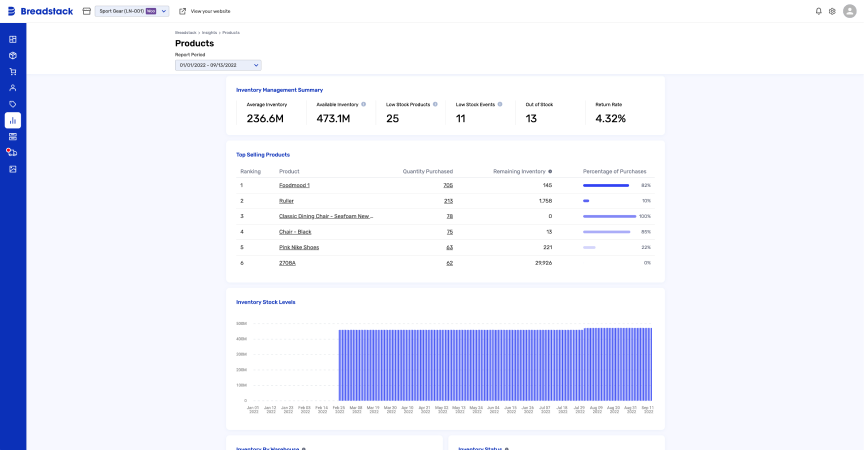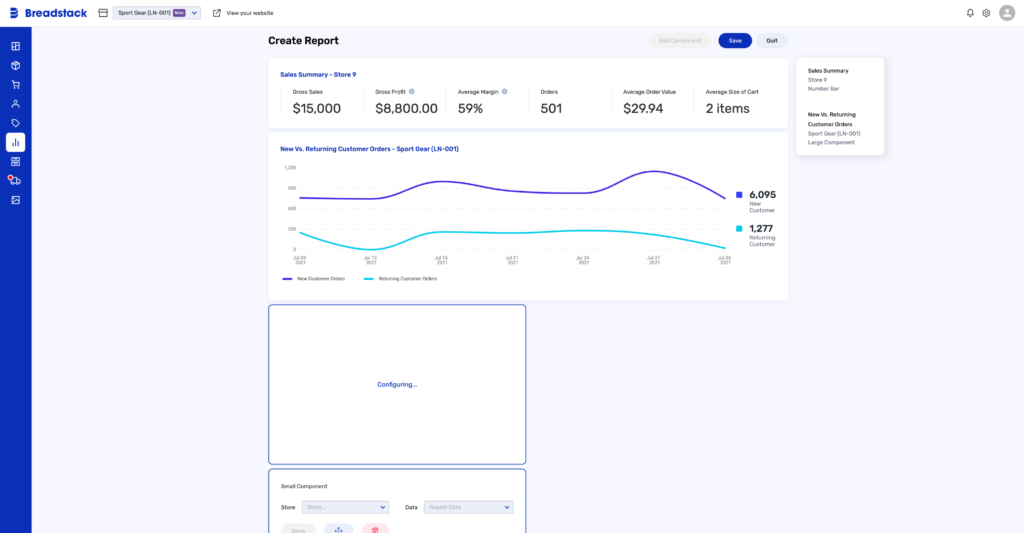Sales and operations planning (S&OP) can be fundamental tools businesses use to assess the supply and demand of their operations.
One of the biggest challenges companies can face is not having transparency between departments, especially sales and operations.
The S&OP encourages conversions about short and long terms goals which creates a better focus for all departments. But how do you create you’re own sales and operation planning? We’ll give you the step by steps to get you started.

What is sales and operations planning?
Sales and operations planning is a process for primarily managing a business’s key competencies. In general terms, it’s to align daily operations with a strategy for growth.
Sales and operations planning is also done in collaboration with marketing, manufacturing, and other employees.
This process relies heavily on data. It’s essential for all team members involved to have the necessary data points to evaluate business functions and overall planning.
The planning that is achieved during these meets is usually to define short and long-term goals, evaluate sales performances and determine the budget for forecasting.
Benefits of sales and operations planning
There are many benefits for small, medium and large companies to endure sales and operations planning.
Improve inventory management
Any business owner with inventory knows the exact struggles and stress of holding onto it. Too much inventory leads to problems and too little inventory can lead to bigger problems.
Having sales and operation planning can help analyze inventory needs for short and long forecasting.
Check out tips for inventory management right now to make changes.
Improve customer service
Customer service may seem like a wavelength from sales and operations planning, but a good strategy in place will overall help your customer service team.
Customer service can very easily make or break a business. Having the necessary structure at the top and throughout an organization will lead to happy employees and happier customers.
Improve wait times
Sales and operations planning will continually optimize your delivery structure. Amazon has made this almost a necessity for businesses that use to take a while to ship products, especially with the rise in same-day delivery or even next-day delivery.
Ensuring you have the proper inventory and delivery structure in your plan is a great way to improve customer satisfaction.
Want to find out how to optimize delivery? Read our article “What is delivery management“?

Improve product quality
Every department involved with your product can have valuable input on what’s working from what’s not working. Marketing could tell you why something isn’t selling, while customer service could give you exact customer feedback.
Sales and operations planning will continually work on improving a better quality product. A better product will directly relate to more savings, fewer returns, fewer refunds, and less time.
Improve profitability
Profitability is at the forefront of any successful business, after all a business needs to make money. The sales and operations planning should be making adjustments for better profitability.
Continuing to plan and make changes will optimize processes, cut back on unnecessary costs and evaluate processes to be aware.
Improve transparency
Employees need to communicate with all departments. This becomes easier with small businesses, but as a business grows so does its departments and employee size.
It becomes harder for everyone to be aware of what each department is doing. The sales and operations planning guarantees to bring everyone up to speed so there is transparency.
Step-by-step guide on sales and operation planning
The steps provided can be used as a guide. The sales and operation planning for your own business can follow its own structure. Each step can vary depending on the company and product.
Forecasting
The first step is forecasting, which is to gather all the data needed to properly forecast figure sales.
The data gathering will be different for each company, however, generally, cash flow, inventory, industry trends, and sales data are good data points to start with.
All of these data points can help you properly plan your sales and operations. It’s important to have relevant and updated information as this could hinder your plan.
The more information available during these meetings will help the team make better business decisions.

Demand planning
The second step of the planning process is adjusting your demand based on step one, (forecasting). This is why forecasting is the crucial step – you need to have accurate data points available to adjust the demand from inventory numbers.
Successful demand planning uses both external and internal factors to make better decisions. During this step, you can review how you plan to meet the demand. It could be through promotions or other cost modifications.
Supply planning
The next step is optimizing your supply chain needs. All departments are of value to you, here everyone from finance to the product team will have input on improving the supply chain.
Understanding all aspects of the supply chain for your business is essential to keeping things moving. This part of planning should outline current supply issues and structures and then work on ways of improving them.
Pre-S&OP meeting
All of the first 3 steps should essentially be done before the initial S&OP meeting happen. All department heads or necessary team members should be involved at this point to create a structured meeting.
The S&OP is a big undertaking ensuring a structure with dedicated talking points will only cause success.
The main purpose of this meeting is to create the sales and operations plan so it is ready for review. Having a leader speak from each department will allow for full transparency with each talking point.
Executive S&OP meeting
Once the pre-S&OP meeting takes place the S&OP executive meeting is the next step.
Everything that has been planned and thought out is now being overviewed in this meeting by the executives or if you are a smaller business most likely the owner and a few advisors.
If the executives reject the initial plan, you’ll have to make the necessary revisions before moving forward to the execution of the plan.
S&OP finalization
After everything has been gathered, planned and approved it’s now time to implement the changes.
Leaders need to delegate the tasks planned to meet the needs of the new sales and operation goal.
However, this isn’t it for sales and operations planning. Monitoring supply and demand changes are critical to see if the plan in place is working.
By monitoring the changes you can correct issues before they negatively affect the business.

The difficulty of sales and operations planning
S&OP offers numerous benefits, it also comes with several challenges. Some of the common challenges of sales and perations planning include:
Data Accuracy and quality
S&OP relies heavily on accurate and reliable data from various sources, including sales, marketing, production, and supply chain.
Inaccurate or incomplete data can lead to flawed forecasts and ineffective decision-making.
Collaboration and communication
Misalignment, lack of trust, and poor communication can hinder the S&OP process, making it difficult to achieve consensus and make informed decisions. Everyone needs to be on the same page.
Demand and supply variability
Fluctuations in customer demand, seasonality, market trends, and supply chain disruptions can introduce significant variability into the S&OP process.
Balancing demand and supply, especially in industries with long lead times or complex supply chains, can be challenging.
Successful sales and operations planning
Have a guide for S&OP
A successful sales and operations plan means following a process from start to finish. Without a plan, it’s easy to get sidetracked or go completely off-topic for the sales and operations plan.
Using a template, guide or even this article can ensure things stay on track throughout the whole process.
One person should run the planning
If your business currently has a good project manager, you’ll know they’re worth their weight in gold. They can effectively get a project going from start to finish, on time, and on budget.
Having someone a part of the sales and operations planning like a project manager can be ensuring everything is completed on time with all the right information needed.
That one person for S&OP planning could be HR, a team lead, or an executive.
Always keep records
Sales and operations planning is an ongoing process. If a business continually does planning, each year you’ll improve.
Maintaining these records will allow all team members to see what has worked and what businesses have tried. Another part of maintaining records is seeing the implementation of the plan and monitoring the impact.
Simplicity is key
The S&OP has one main goal and it’s to align daily operations with a strategy for growth. All discussions, questions and input should come back to them.
Companies that introduce an S&OP may overcomplicate things. We did mention more data can be better, but that’s only if it relates to the S&OP.
Even meeting around the plan can be simplified. They should relate only to the plan to continue transparency.

The value of S&OP
The S&OP is a great way to improve the supply and demand of a company while ensuring everyone is on the same page with all short and long terms goals.
Getting started with your own plan may seem like a challenge, but the first step is getting the right data.
Breadstack’s unified commerce platform offers real-time data across all departments so you can have complete transparency of what’s happening in your business.
Monitor sales teams, customer service reps, operational tasks, inventory control and so much more.
Breadstack is giving businesses the tools to succeed with an all-in-one client solution. If you’re ready to optimize your business, check out a demo with us. Sign up here!

